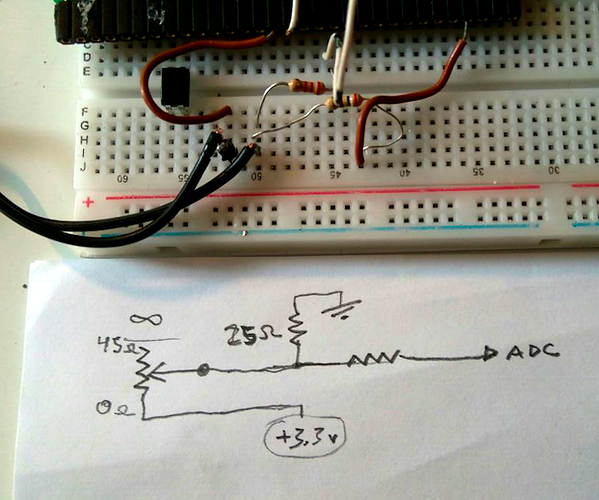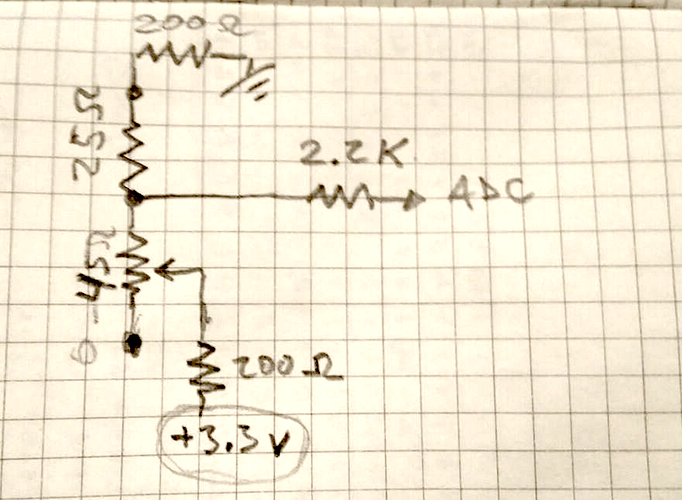Sorry, Ricard's values are right, I did it with 5v. Normal potentiometers shouldn't be a problem if they are connected to both ground and positive (so that one resistor goes up when the other goes down) because they are usually at least 5kohm. so each would use around .66mA of current. The problem with your divider is that it has very low values, so it lets pass a whole lot of current, also, one of your resistors is fixed, so it doesn't goes up when the other goes down. If you do what ricard says, you'd use a lot less current, but, also your voltage would vary a lot less: it would go from around 3.18v to 3.3v. There are two things I can think of to handle that small voltage range:
-One: you can bring the minimum of that range, 3.18v, to 0. Then, use a opamp to amplify that signal. You could maybe use another opamp to substract the 3.18v, but I think it would have to be another opamp, I'm not sure really.
-Two: you could try setting the adc's vref - to 3.18 and the vref + to the normal 3.3v. Maybe that would work, although it would certainly be more susceptible to noise. Also, I'm not sure if the Axoloti exposes those pins.
I think you already have a voltage divider that works in the tracks that can handle that amount of power, you'd just have to use another fixed voltage divider to bring that voltage to a 0-3.3 range and maybe a series resistor to limit current if you think you need it. I don't know, it seems easier to me.
Edit.
PD
I suppose nanokontrol must not have a limit of messages per ms so it cloggs the usb buffers. Now that I remember, we solved that problem in Ubuntu by forcing it to use USB 1.1 for whatever it's worth, I don't remember why it solves it though. Anyway, that should never happen with the Axoloti and four controls, because it has a self imposed slow time cycle to do stuff; you'd need to send a lot more controls; like, hundreds I believe.
Also, did you try pressing the four controls at the same time? If you do it, I advise to do it carefully. Also, consider if you'd use power for some other things; like audio or screens; it all adds up. And, finally, I'd really advise to try this things in a circuit simulator first. There is this one that's very simple: https://www.falstad.com/circuit/ There are others that are better, with SPICE, but with a learning curve, like http://www.partsim.com/simulator. Any of them could give you an idea of the power your circuit uses.



